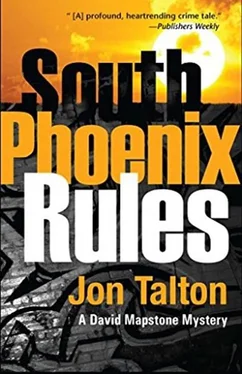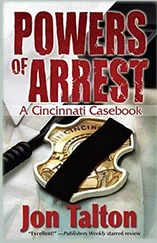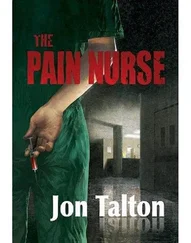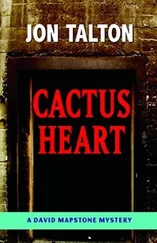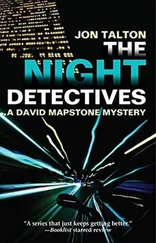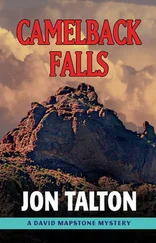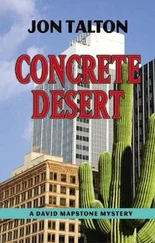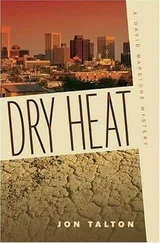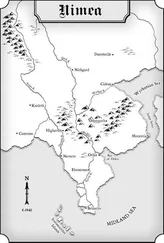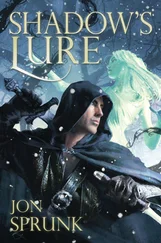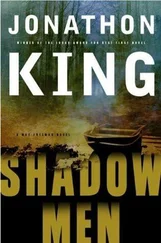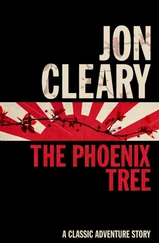On the first night, I got a call back from Nick DeSimone, the Scottsdale chef. He told me things that didn’t surprise me. He had never heard of Judson Lee. He had no roots in Phoenix and both his grandfathers had died peacefully in Chicago. I thanked him, hung up, and for the thousandth time cursed my naiveté.
All that time Barney never appeared, but after ten on the third night a familiar cream Caddy zipped into the back lot and parked in a handicapped space. Judson Lee got out and strode inside. Following him, quick-stepping to keep up, was a tall Anglo man, young, muscled, military haircut. He had a hawk’s nose, as if begging for a pair of glasses, but there were no glasses. He was long-limbed and wide-hipped. The night was warm but he wore an oversized black windbreaker, just the kind of garment that might conceal a firearm.
I sat up straight in the car seat, a blend of rage and fear sending prickly signals through my legs. I unconsciously touched the butt of the Colt Python on my belt and ran my hand over the towel that covered the TEK 9, taken from the gang member who had been sitting on my street, resting on the passenger’s seat. Its thirty-two-round magazine was full of nine-millimeter ammunition. I cursed Judson Lee aloud, my voice a strange companion in the silence of the dark parking nook. Another ten minutes passed before a Dodge Ram truck glided into the lot and Barney got out.
After six hours that the clock said were forty-five minutes, the three men came out again. Judson Lee and Barney talked animatedly, the slightly built lawyer gesticulating, Barney nodding and nodding. They seemed like an unlikely pair. Then Lee walked to his Caddy, turned to say one more thing to Barney, and got in the car. The man who looked unmistakably like a bodyguard drove. I started the Prelude and slowly slipped down the driveway with the lights off. When the Cadillac turned east on Indian School, I followed, letting a car get between us, maintaining a quarter-mile distance.
This was the point where the old David, so valued by everyone in my life for good judgment, would have called the police. Called Peralta. But the idea never occurred to me. The prickliness was gone from my legs. I felt comfortably frosty.
They turned south on Thirty-second Street and accelerated to fifty. The speed limit was thirty-five, but nobody in Phoenix paid attention to such niceties, so I was able to keep up and still blend in with the moderate traffic. That’s what I told myself.
Much of this had been groves when I was little-Phoenicians drove out the two-lane roads and bought oranges and grapefruits from little stands-then it had been remade into middle-class, single-family ranch houses. Now it was going down, miles and miles. The well-off Anglos called it the “Sonoran Biltmore” and laughed. To me it was a haunted landscape.
The Caddy made the light at Osborn. Then it turned hard red. I cursed, made a quick right, a U-turn that barely missed an oncoming Chevy, then swung south again on 32nd and soon caught up, a safe quarter mile between me and Lee’s taillights.
They caught the Red Mountain Freeway and sped east, all the way across the Salt River, past downtown Tempe with its new, derelict forty-story condo tower and the In-N-Out Burger at Rural Road, then swung south onto the Price Freeway, running fast now that the four-hour rush hour was over. Of course, this, too, had once been wide-open agricultural land. Most of it was built up in the years I was away from Phoenix and I barely knew it now. Knowing it didn’t take genius: wide avenues every mile lined by the entrances to newer subdivisions of curvilinear streets and houses with tile roofs. Shopping strips anchored by a Fry’s or Safeway sat on the major corners, along with huge gas stations. There were far fewer payday loan stores. The tableaux passed with numbing regularity. Better-off white families, the better-funded schools; the Intel semiconductor plants that provided a dash of diversity in the region’s economy. Totally car-dependent. Except for the proliferation of brand-new Mormon and evangelical churches, this land was Maryvale half a century ago and didn’t know it. I wondered how many of the husbands of the East Valley had stopped at a strip club on the way home.
I was four cars behind them at the red light for Chandler Boulevard when the feeling first bobbed against me. I set it aside when the light changed. Couldn’t lose them now; wishing I could get close enough to make out the license tag. We whipped across the overpass and drove east again. Then the Caddy signaled left and entered a subdivision. I slowed down and waited, then followed them in with my lights off. The place was damnably well-lit, but I risked it, staying with the red tail-lights as they went straight, made a gentle curve, then a hard right turn onto another street. I approached the street at five miles per hour, nosing just enough beyond the edge of a house to see a large garage door opening in the middle of the block and the Cadillac disappear inside. The door came down.
It was a pleasant block, if suburbia was your thing. Yet it had all the charm of an empty cereal box. Newer houses were jammed together with postage-stamp lawns, wide driveways, three-car garages, and walled-in back yards. The entrances were small because the developer expected people to come and go through the garages. Those varied little more than the two or three styles of stucco tract houses, all painted to a palette ruthlessly enforced by the homeowners association. This was a place where people were supposed to blend in. If I had looked away for a second, I couldn’t have recalled which house they had entered. But I didn’t lose that second. I turned on the headlights and drove by at a normal speed, noting the address. Lights were on inside. No other vehicles were visible on the street.
But the feeling was still there: that cop’s sixth sense that I was proud to have acquired despite my itinerant law-enforcement career. It was the awareness of being followed.
It felt good to be back in the center city and I stopped at the taco truck on McDowell Road, in a dark parking lot a few blocks from the hospital. Even though it was nearly midnight, I had to wait in line to order two Mexican hot dogs. The music of Chalino Sanchez, or somebody who wanted to sound like him, was playing from portable speakers. The air was still and moody.
I sat in one of the lawn chairs opened on the pavement and for the first time in days actually tasted the food. A beer would have been nice, but I had to settle for a Diet Coke. They were fixed just right, cooked until the dog and bacon were one and covered in beans, tomatoes, and onions, to which I had added a few more goodies from the salsa bar. I ate the food and in my mind chewed over the meeting between Lee and Barney. Everyone was speaking Spanish but they took no notice of the Anglo in their midst. These were working people. They kept the local economy going and the whites from the Midwest hated them. I expected an immigrant sweep at any moment from the new sheriff.
Instead, a new Mercedes parked at my feet and a black cowboy climbed out.
He didn’t walk to the order window. With a scraping on the asphalt, he moved a cheap chair next to mine and sat down. I was in the middle of the second dog and just let him be. The Python was in easy reach, and if he were packing, it would be in an ankle holster, so I could beat him to the draw. I didn’t want any of that to happen. I just wanted to enjoy my hotdog.
“Nice evening.”
I agreed with him. The man was around my age, with a thick neck and big hands. He wore jeans, boots, Western-cut shirt, and a white Stetson. The real Old West had plenty of African-American cowboys. You just didn’t see them around 21st century Phoenix.
“Now I ran your tag through NCIC and the car came back clean.”
Читать дальше
